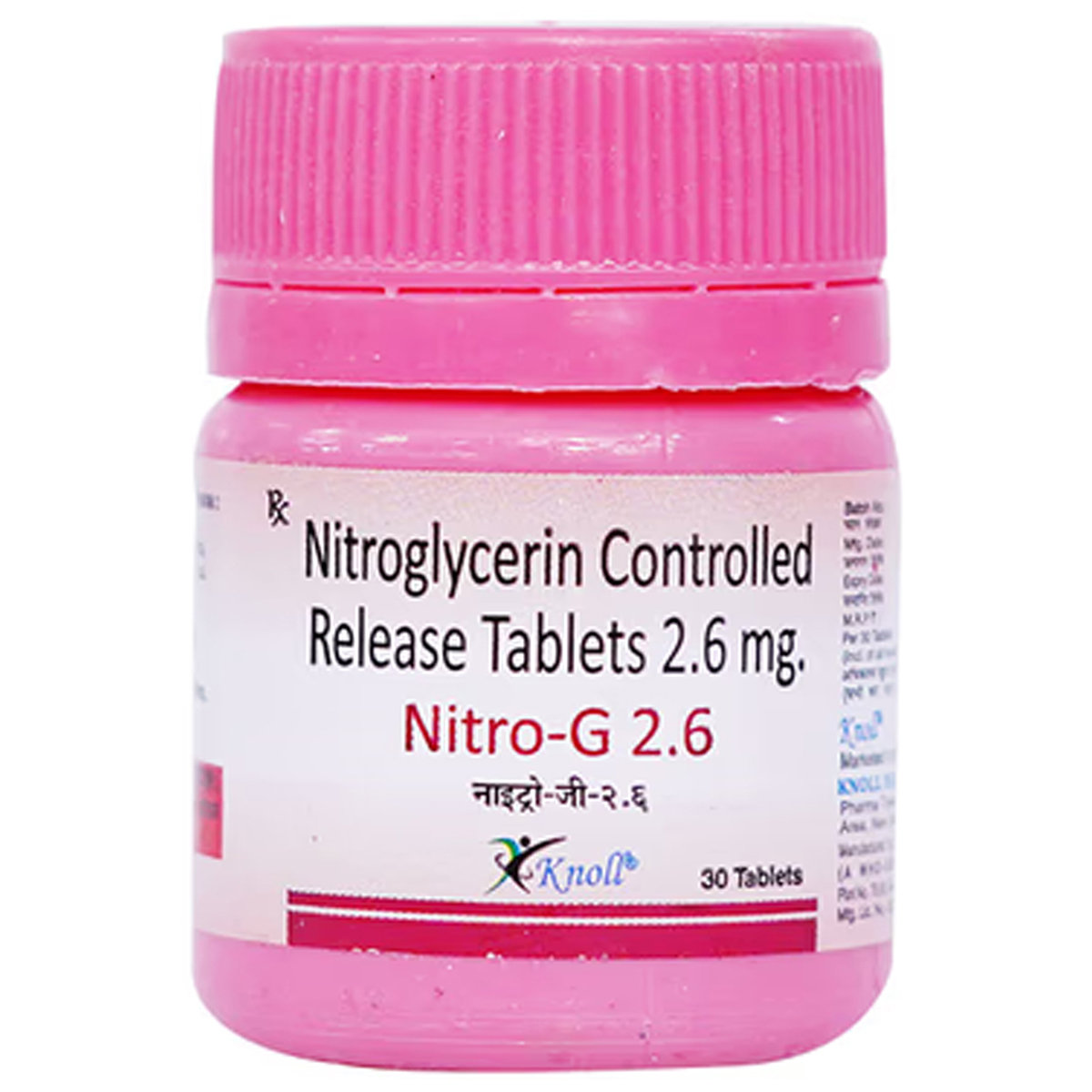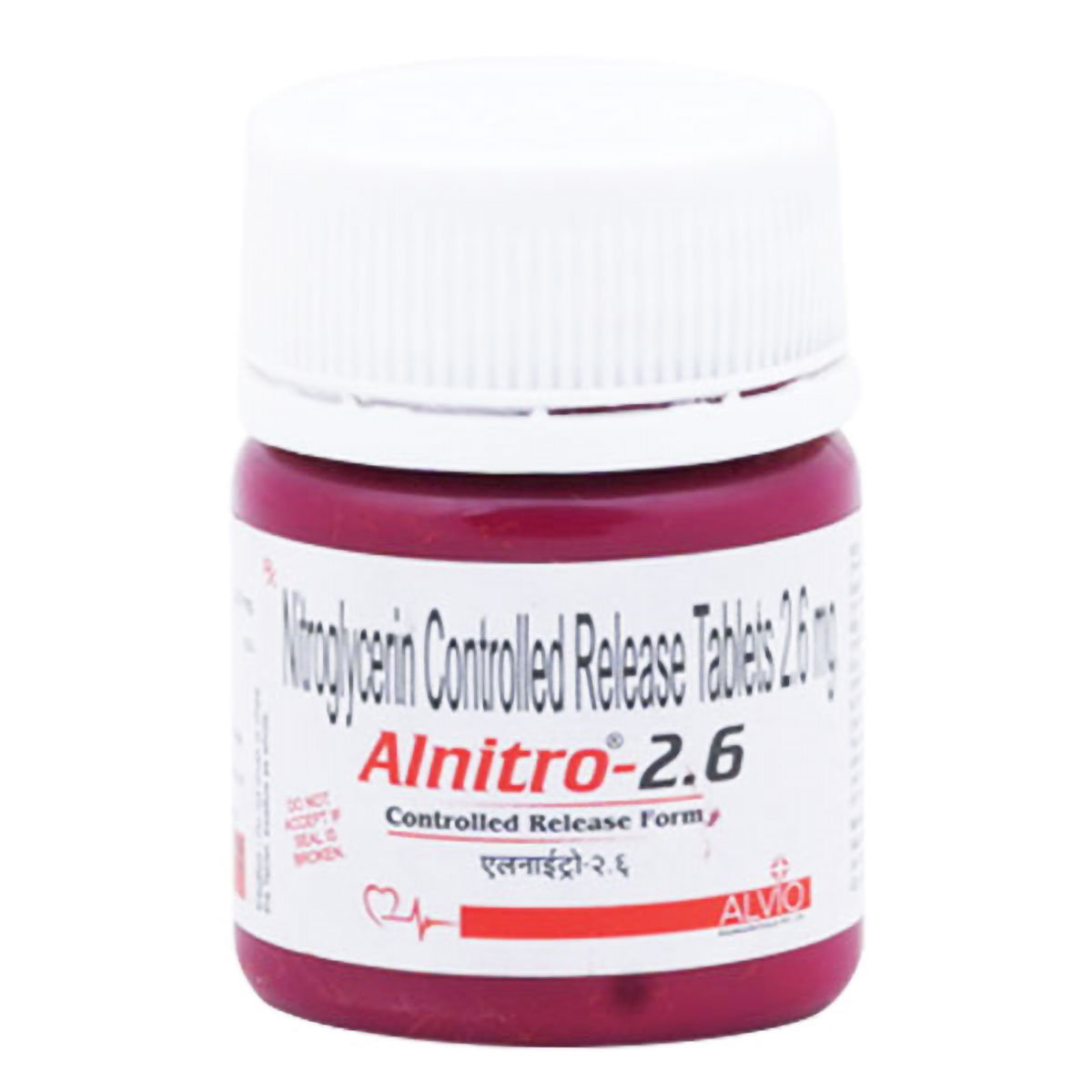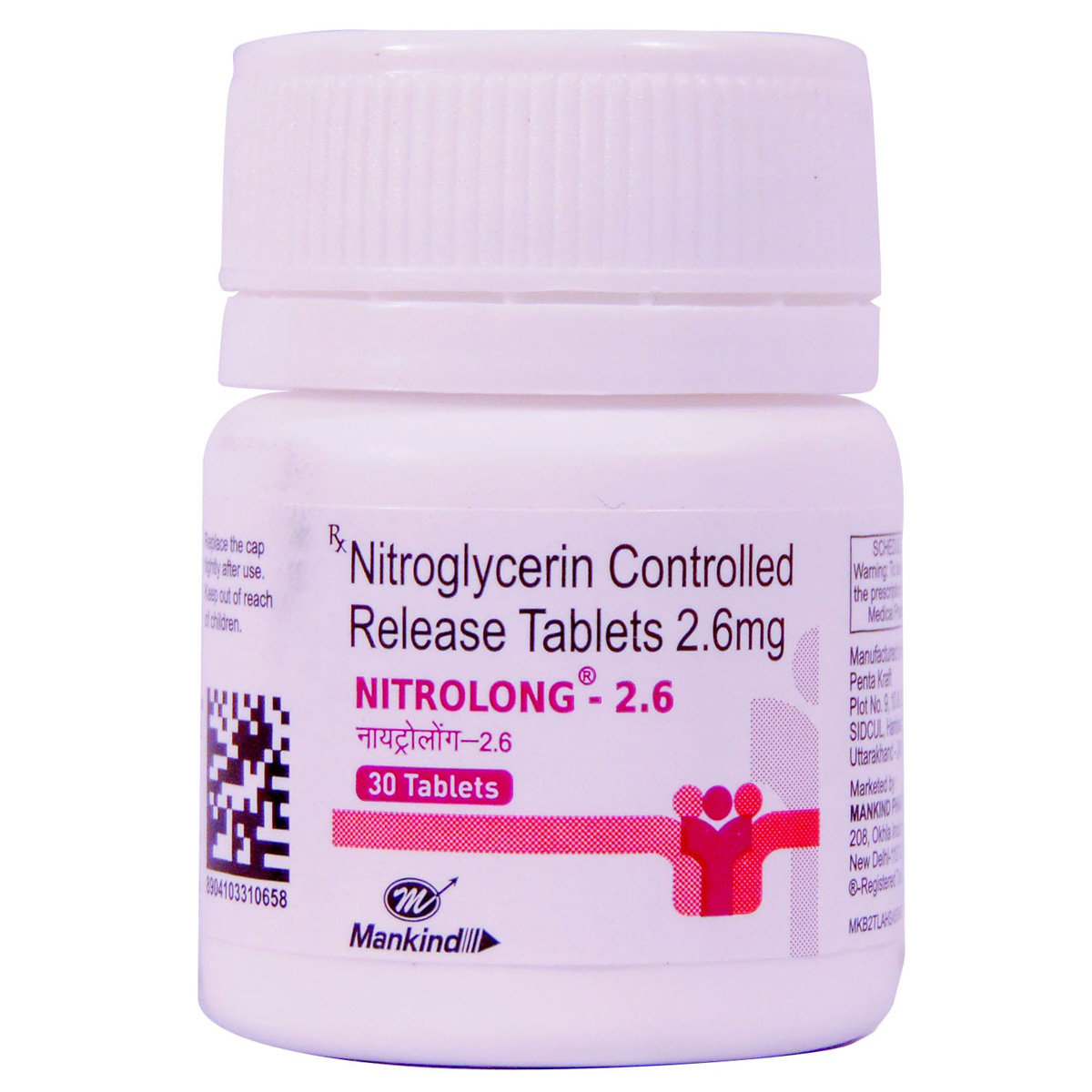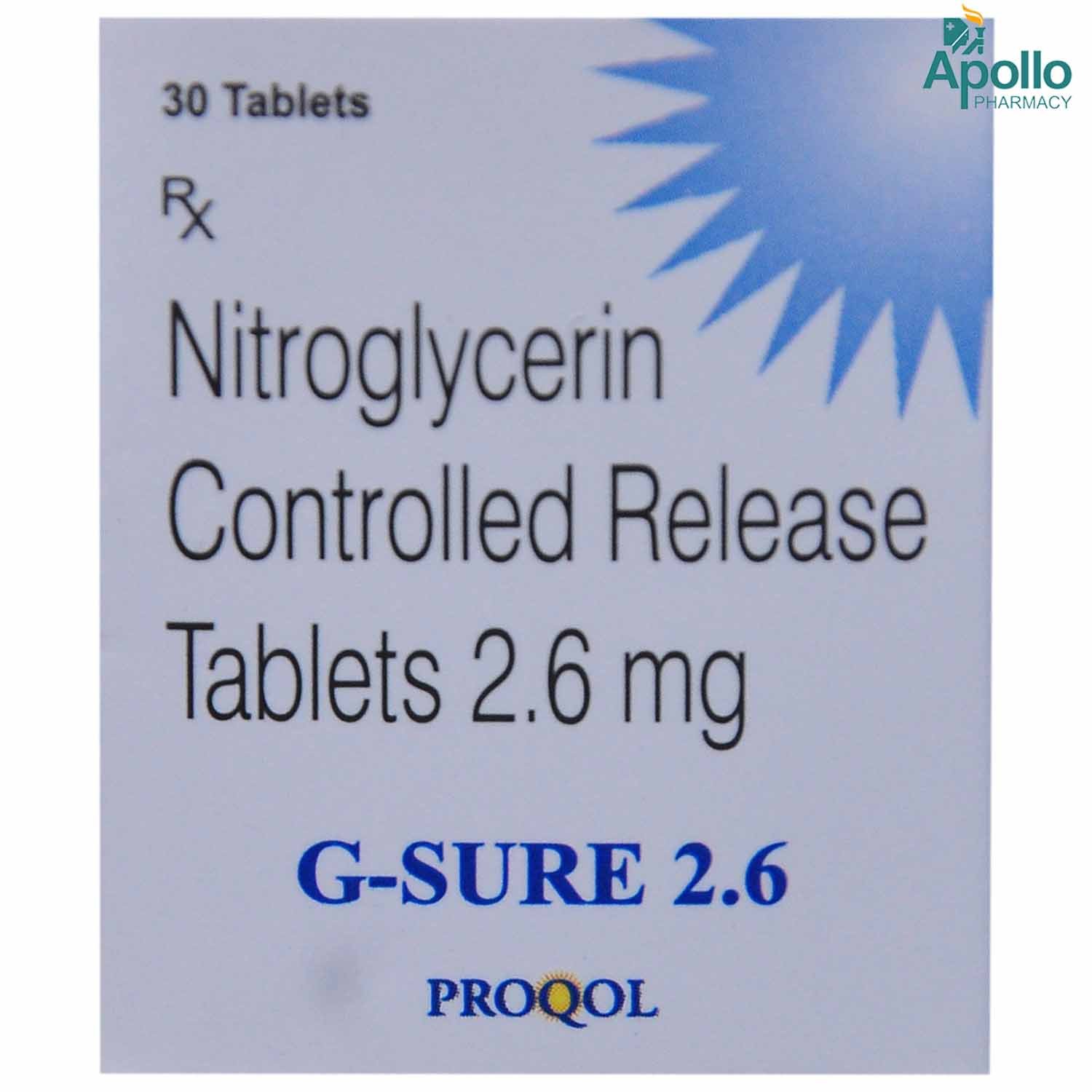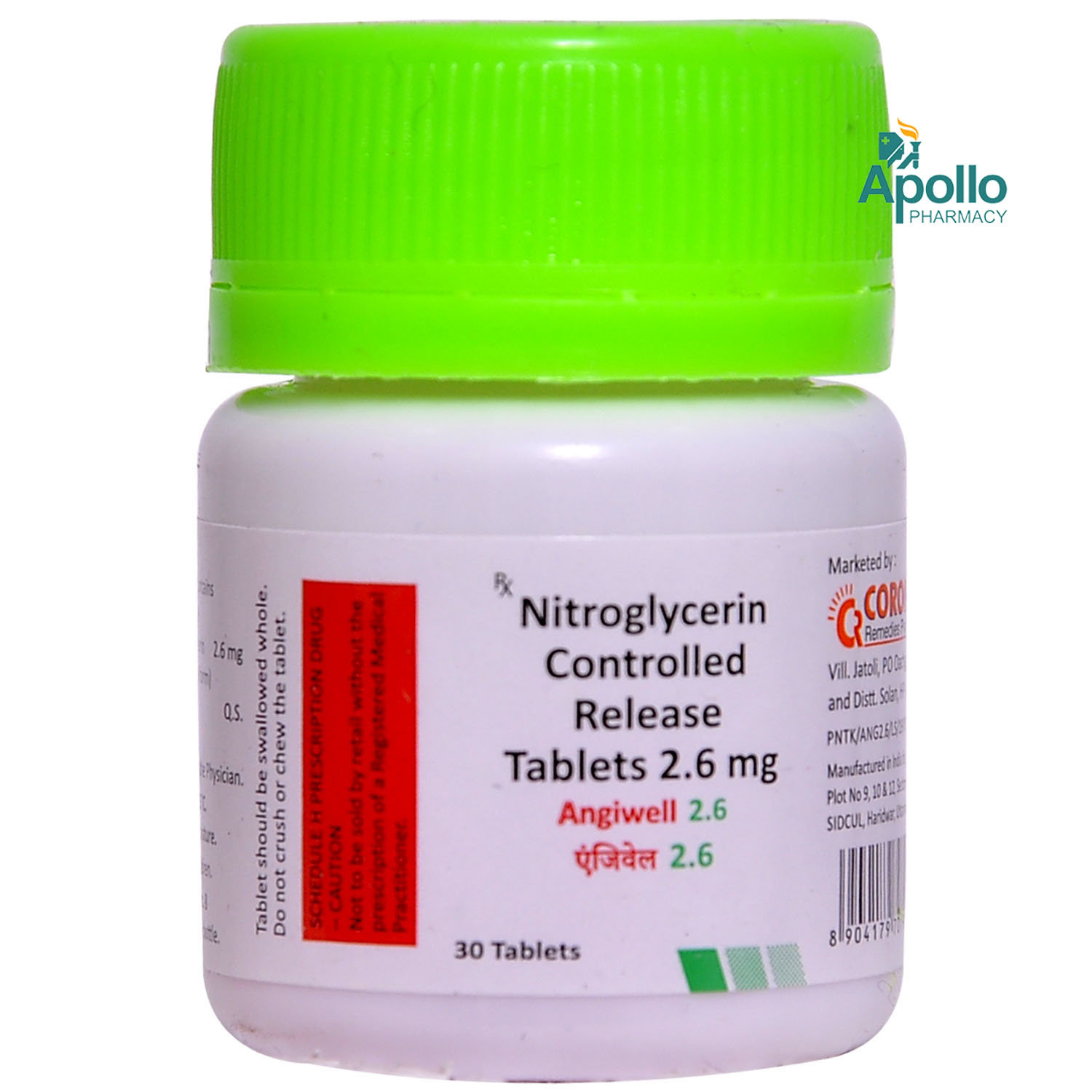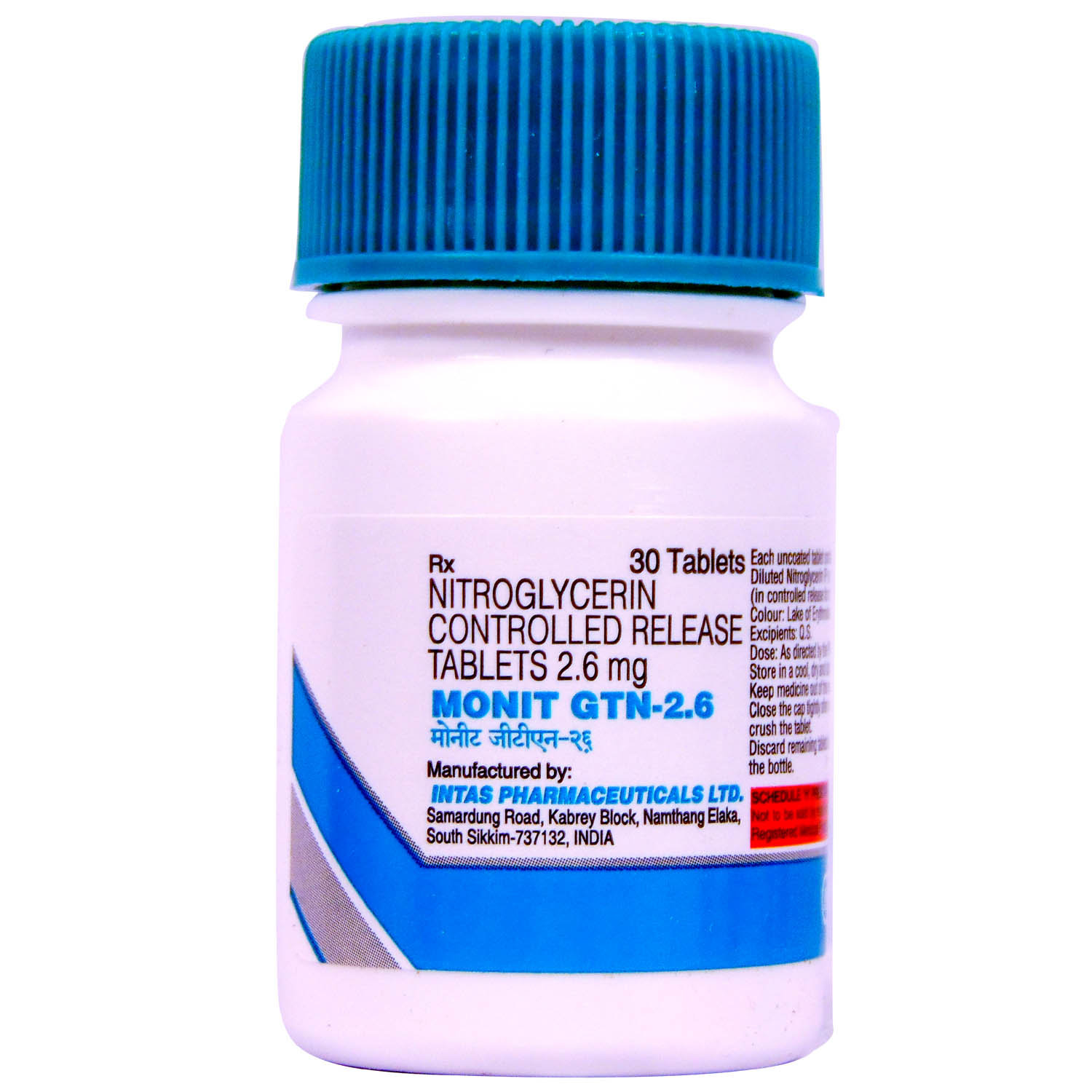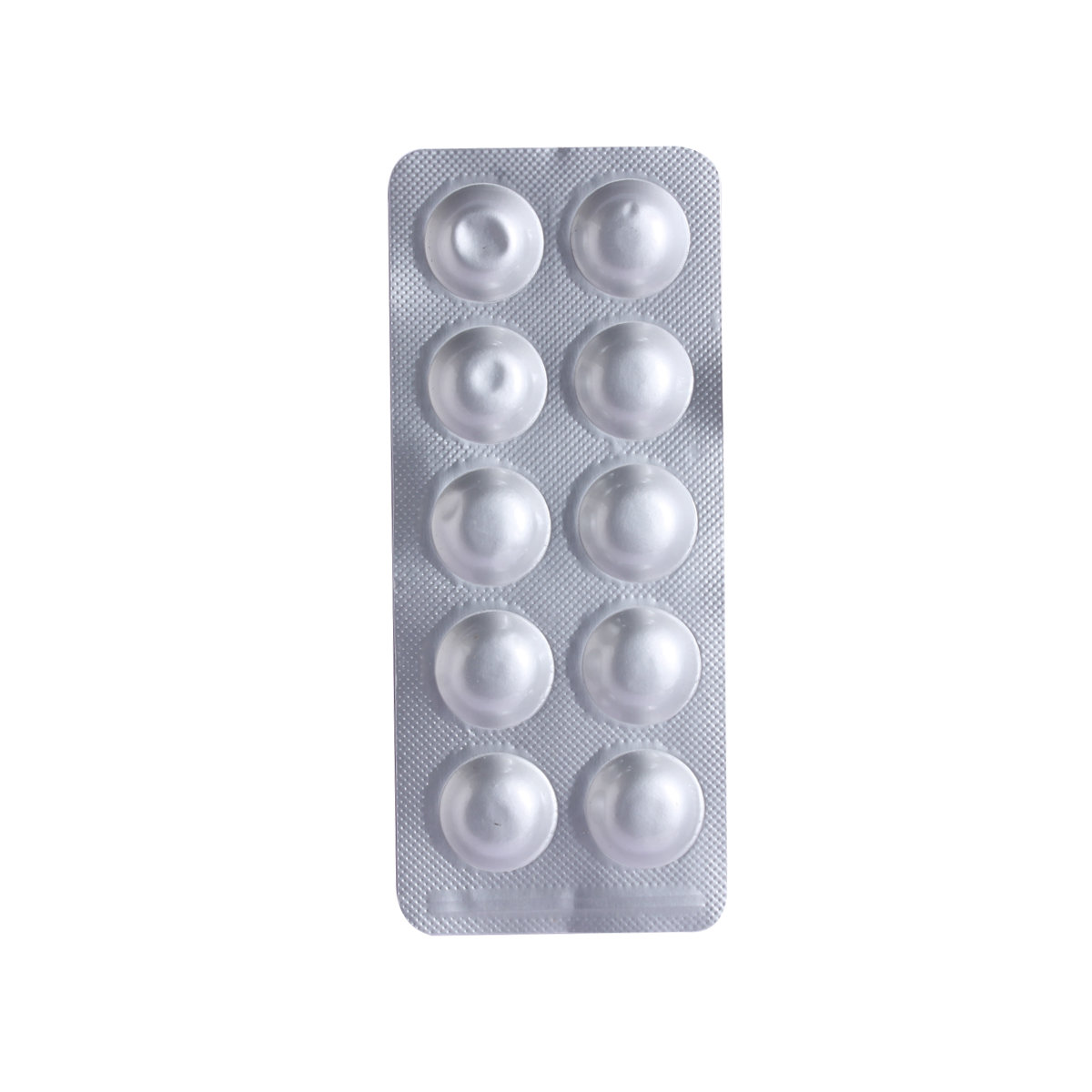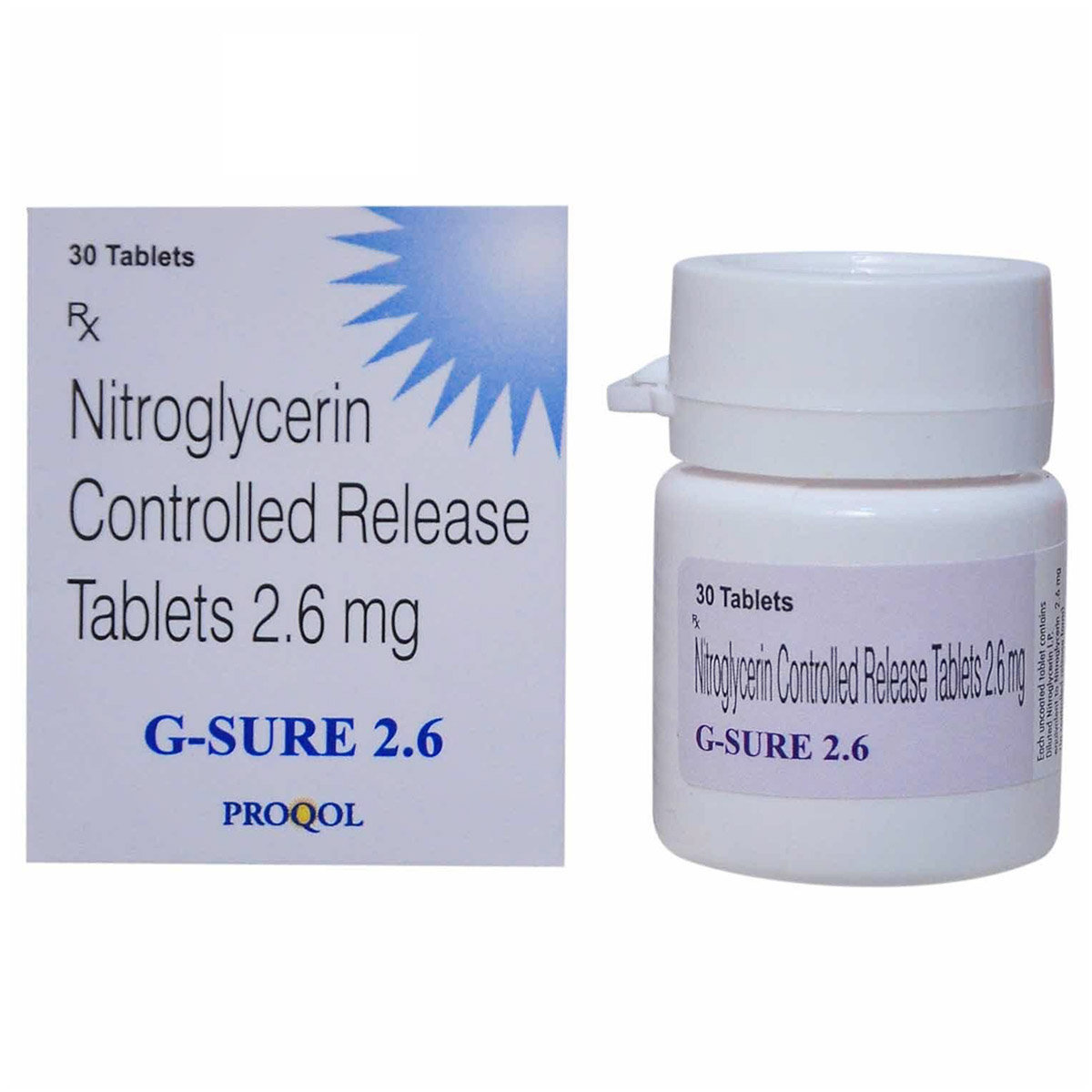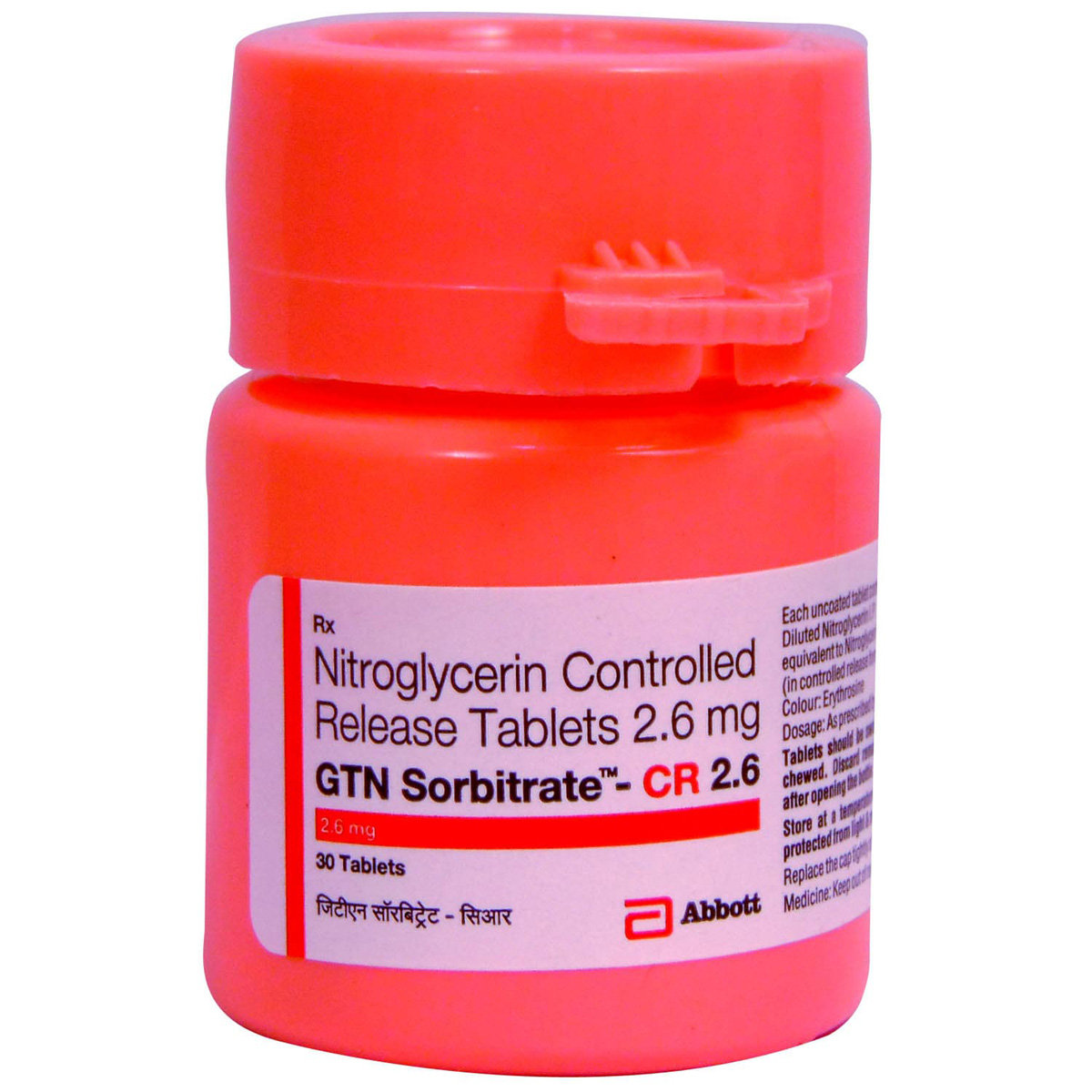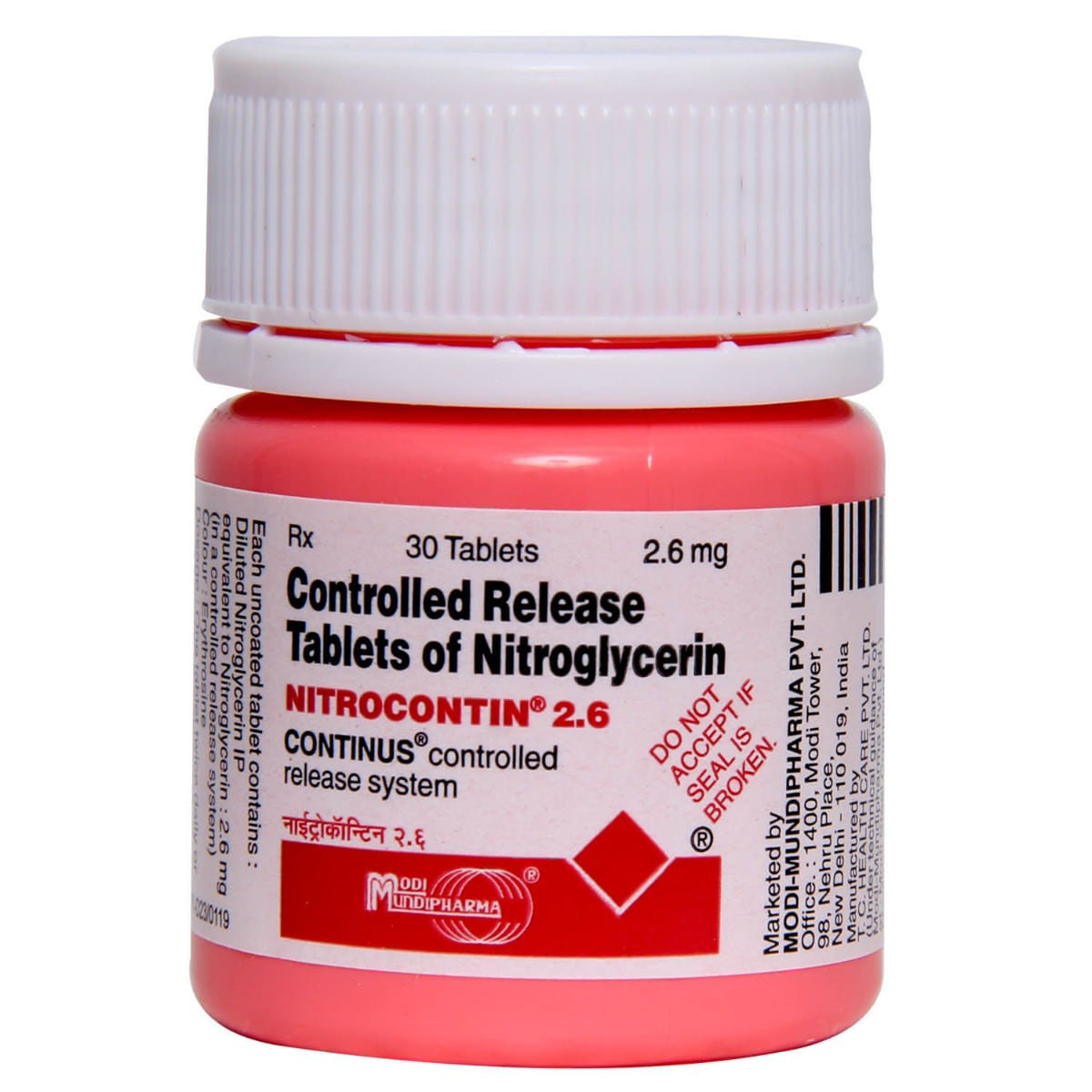- Home
- Monit GTN 2.6 mg Tablet
Monit GTN 2.6 mg Tablet Substitute
Monit GTN 2.6 mg Tablet Substitute
Medicine Composition:
NITROGLYCERIN-2.6MGAll Substitutes & Brand Comparisons
RX
Glytrate 2.6 mg Tablet 30's
Econ Healthcare
₹149
(₹4.47 per unit)
41% CHEAPERRX
Nitro-G 2.6 Tablet 30's
Knoll Pharmaceuticals Ltd
₹180
(₹4.5 per unit)
41% CHEAPERRX
Anglit 2.6 Tablet 30's
Tas Med India Pvt Ltd
₹160
(₹4.8 per unit)
37% CHEAPERRX
Nitroduce-2.6 XL Tablet 30's
Azcad Pharmaceuticals Pvt Ltd
₹184.5
(₹5.54 per unit)
27% CHEAPERRX
NitroGTN 2.6 CR Tablet 30's
Qualchem Healthcare Pvt Ltd
₹199
(₹5.97 per unit)
22% CHEAPERRX
Alnitro-2.6 Tablet 30's
Salud Care India Pvt Ltd
₹224.5
(₹6.74 per unit)
12% CHEAPERRX
Nitrolong-2.6 Tablet 30's
Mankind Pharma Pvt Ltd
₹229
(₹6.87 per unit)
10% CHEAPERRX
G Sure 2.6 Tablet 30's
₹238
(₹7.14 per unit)
6% CHEAPERRX
Angiwell CR 2.6 Tablet 30's
Corona Remedies Pvt Ltd
₹246.5
(₹7.4 per unit)
3% CHEAPERRX
Monit GTN 2.6 Tablet 30's
Intas Pharmaceuticals Ltd
₹255.5
(₹7.67 per unit)
RX
New GTN 2.6 mg Tablet 10's
Aprica Pharmaceuticals Pvt Ltd
₹85.5
(₹7.7 per unit)
RX
Nitro 2.6 Tablet 30's
Three Dots Life Science Pvt Ltd
₹257.5
(₹7.73 per unit)
RX
G-Sure 2.6 mg Tablet 30's
Proqol Health Care Pvt Ltd
₹261.5
(₹7.85 per unit)
2% COSTLIERRX
GTN Sorbitrate-CR 2.6 Tablet 30's
Abbott India Ltd
₹285
(₹8.55 per unit)
11% COSTLIERRX
Nitrocontin 2.6 Tablet 30's
Modi Mundipharma Pvt Ltd
₹384
(₹11.52 per unit)
50% COSTLIER

When Should You Consider Switching from Monit GTN 2.6 mg Tablet ?
Patients may explore substitutes in the following scenarios:
- High monthly cost of Monit GTN 2.6 mg Tablet
- Non-availability in local pharmacies
- Generic recommendation by a doctor
- Side effects or better tolerability with alternatives
What to Know Before Switching
Before you switch from Monit GTN 2.6 mg Tablet to another medicine, here are some important points to keep in mind:
Same salt, different brands:
Most substitutes contain the same active ingredient - NITROGLYCERIN-2.6MG, but the fillers, coating, or manufacturing quality may vary slightly.
Consult your doctor first:
Even if the salt is the same, your doctor can confirm if the substitute is right for your condition, dosage, and health history.
Watch out for allergies or reactions:
Some people may react differently to certain brands due to inactive ingredients. If you notice any side effects, inform your doctor immediately.
Price ≠ effectiveness:
A lower-priced substitute doesn't mean it's less effective. Many generic medicines work just as well as branded ones.
Check the dosage form and strength:
Always match the substitute’s strength (e.g., 5mg, 10mg) and form (tablet, capsule, syrup) with what your doctor prescribed.
Uses
Monit GTN 2.6 mg Tablet is used in the treatment of Angina pectoris. The detailed uses of Monit GTN 2.6 mg Tablet are as follows:
- Treatment and prevention of angina attacks: Monit GTN 2.6 mg Tablet is used to treat and prevent angina attacks by improving blood flow to the heart muscle.
- Management of coronary artery disease: Monit GTN 2.6 mg Tablet helps manage coronary artery disease by dilating blood vessels and reducing the heart's workload.
- Supportive treatment in heart failure: Monit GTN 2.6 mg Tablet is used as supportive treatment in heart failure to reduce strain on the heart and improve circulation.
Medicinal Benefits
- Monit GTN 2.6 mg Tablet contains Nitroglycerin, a natural vasodilator used to treat and prevent angina.
- It helps improve blood flow by relaxing and widening blood vessels.
- By dilating the coronary arteries, it increases oxygen supply to the heart muscles, reducing pain and discomfort caused by reduced blood flow.
- Monit GTN 2.6 mg Tablet lowers the pressure against which the heart has to pump and helps in managing conditions that strain the heart.
- In people with angina, it enables them to perform physical activity with reduced risk of chest pain.
FAQs
The substitutes of Monit GTN 2.6 mg Tablet contain the same active salt(s) - NITROGLYCERIN-2.6MG. However, they may differ in price, manufacturing quality, and inactive ingredients. Speak to your doctor to find a suitable option.
Switching to a generic substitute medicine in the place of Monit GTN 2.6 mg Tablet is often possible if it has the same salt, strength, and dosage form. But always check with your doctor before making any changes to your medication.
Generics versions of Monit GTN 2.6 mg Tablet are typically more affordable because they don’t include the original brand's research, development, and marketing costs. They contain the same active ingredient and are approved for safety and effectiveness.
Most people don’t notice any difference. However, some may react to different fillers or coatings. If you notice any unusual symptoms after switching, consult your doctor.
Make sure the new medicine has the same active salt, strength, dosage form. Always confirm the change with your doctor or pharmacist.
Substitutes of Monit GTN 2.6 mg Tablet meet the same safety and efficacy standards as Monit GTN 2.6 mg Tablet , but small differences in absorption or formulation can exist. A doctor can help you choose the right one for your needs.
Yes. Substitutes of Monit GTN 2.6 mg Tablet may vary in color, size, or shape due to differences in manufacturing and branding, but this does not affect how they work.
Yes, it’s generally safe to switch between multiple substitutes of Monit GTN 2.6 mg Tablet if they have the same salt and strength. However, always inform your doctor so they can monitor how your body responds.
Yes, many people safely use substitutes of Monit GTN 2.6 mg Tablet for long-term treatment. Just ensure it’s done under medical supervision.
If your symptoms stay under control or lab results remain stable, the substitute for Monit GTN 2.6 mg Tablet is likely working well. Regular follow-ups with your doctor are important.
Absolutely. Even with the same salt, small differences can affect how your body responds when switching from Monit GTN 2.6 mg Tablet to its substitute. Always consult your doctor before switching.
Monit GTN 2.6 mg Tablet is used to treat angina pectoris, a kind of chest pain caused by decreased blood flow to the heart.
Monit GTN 2.6 mg Tablet contains Nitroglycerin, a natural vasodilator that works by expanding blood vessels (veins and arteries). This boosts the blood supply to your heart, allowing more oxygen to reach your heart muscles and reducing chest pain. As a result, it reduces heart workload and prevents attacks of angina.
No, Monit GTN 2.6 mg Tablet should be taken in the dose and duration as advised by the doctor. If you take it in more than the recommended dose, it might cause unpleasant side effects. If you think your symptoms are not improving, please consult your doctor.
No, you should not take Monit GTN 2.6 mg Tablet with your erectile dysfunction medication as it might trigger the blood pressure-lowering effect of Monit GTN 2.6 mg Tablet .
Do not stop taking Monit GTN 2.6 mg Tablet without talking to your doctor. If you suddenly stop taking Monit GTN 2.6 mg Tablet , you may experience confusion, fever, mental state changes, or severe muscle stiffness. Your doctor will probably decrease your dose gradually depending upon your disease condition.
Yes, Monit GTN 2.6 mg Tablet can cause a headache. Please increase fluid intake as it is known to cause headaches when taking Monit GTN 2.6 mg Tablet . If the problem persists, consult your doctor and do as advised.
Monit GTN 2.6 mg Tablet reduces the blood pressure by relaxing and widening the blood vessels, but is not recommended for the treatment of high blood pressure. Low blood pressure may cause lightheadedness, especially when getting up from a seated position suddenly.
Yes, over usage of Monit GTN 2.6 mg Tablet can lead to tolerance which means that the medication may lose its effectiveness on you. Therefore, usually the doctors recommend the smallest dose necessary for effective relief of acute angina attack. This helps maintain the effectiveness of Monit GTN 2.6 mg Tablet .
Monit GTN 2.6 mg Tablet overdose may result in sweating, low blood pressure, headache, vomiting, nausea, slow or fast heartbeat. In addition, the patient may experience weakness, lightheadedness on standing and possibly fainting. In such case, the patient will need emergency medical treatment.
Monit GTN 2.6 mg Tablet is used to prevent angina (chest pain) attacks in patients with coronary artery disease (narrowing of blood vessels that supply blood to the heart). Monit GTN 2.6 mg Tablet relaxes the blood vessels (veins and arteries) which reduces the workload on the heart. This allows more oxygen to reach your heart muscles and reduces chest pain. Thus, it prevents attacks of angina.
Buy best Cardiology products by
Torrent Pharmaceuticals Ltd
Lupin Ltd
Sun Pharmaceutical Industries Ltd
Intas Pharmaceuticals Ltd
Cipla Ltd
Micro Labs Ltd
Abbott India Ltd
Macleods Pharmaceuticals Ltd
Ajanta Pharma Ltd
Ipca Laboratories Ltd
Eris Life Sciences Ltd
Mankind Pharma Pvt Ltd
Lloyd Healthcare Pvt Ltd
Dr Reddy's Laboratories Ltd
Emcure Pharmaceuticals Ltd
Alembic Pharmaceuticals Ltd
Glenmark Pharmaceuticals Ltd
Alkem Laboratories Ltd
East West Pharma India Pvt Ltd
Zydus Healthcare Ltd
USV Pvt Ltd
Aristo Pharmaceuticals Pvt Ltd
Alteus Biogenics Pvt Ltd
J B Chemicals & Pharmaceuticals Ltd
Elbrit Life Sciences Pvt Ltd
Fusion Health Care Pvt Ltd
Eswar Therapeutics Pvt Ltd
La Renon Healthcare Pvt Ltd
Zydus Cadila
Akumentis Healthcare Ltd
Hbc Life Sciences Pvt Ltd
Troikaa Pharmaceuticals Ltd
Knoll Healthcare Pvt Ltd
Corona Remedies Pvt Ltd
Morepen Laboratories Ltd
Prevego Healthcare & Research Pvt Ltd
Lividus Pharmaceuticals Pvt Ltd
Medley Pharmaceuticals Ltd
Shrrishti Health Care Products Pvt Ltd
Jubilant Lifesciences Ltd
Msn Laboratories Pvt Ltd
Zuventus Healthcare Ltd
Steris Healthcare
Cadila Pharmaceuticals Ltd
Ranmarc Labs
Unison Pharmaceuticals Pvt Ltd
Elder Pharmaceuticals Ltd
Tas Med India Pvt Ltd
Blue Cross Laboratories Pvt Ltd
Primus Remedies Pvt Ltd
Leeford Healthcare Ltd
Sanofi India Ltd
Azkka Pharmaceuticals Pvt Ltd
Nirvana India Pvt Ltd
Knoll Pharmaceuticals Ltd
Orsim Pharma
Sinsan Pharmaceuticals Pvt Ltd
Systopic Laboratories Pvt Ltd
Indiabulls Pharmaceuticals Pvt Ltd
RPG Life Sciences Ltd
Biochem Pharmaceutical Industries Ltd
Johnlee Pharmaceuticals Pvt Ltd
Vasu Organics Pvt Ltd
Cadila Healthcare Ltd
Econ Healthcare
Olcare Laboratories Pvt Ltd
Shine Pharmaceuticals Ltd
Xemex Life Sciences
Elicad Pharmaceuticals Pvt Ltd
Elinor Pharmaceuticals (P) Ltd
Sunij Pharma Pvt Ltd
Orris Pharmaceuticals
FDC Ltd
Lia Life Sciences Pvt Ltd
MEDICAMEN BIOTECH LTD
Nicholas Piramal India Ltd
Pfizer Ltd
Astra Zeneca Pharma India Ltd
Lakshya Life Sciences Pvt Ltd
Opsis Care Lifesciences Pvt Ltd
Atos Lifesciences Pvt Ltd
Biocon Ltd
Finecure Pharmaceuticals Ltd
Glynis Pharmaceuticals Pvt Ltd
Indoco Remedies Ltd
Med Manor Organics Pvt Ltd
Acmedix Pharma Llp
Pficus De Med Pvt Ltd
Proqol Health Care Pvt Ltd
Divine Savior Pvt Ltd
Enovus Healthcare Pvt Ltd
Samarth Life Sciences Pvt Ltd
ALICAN PHARMACEUTICAL PVT LTD
Alvio Pharmaceuticals Pvt Ltd
Chemo Healthcare Pvt Ltd
Maxford Labs Pvt Ltd
Merck Ltd
Ordain Health Care Global Pvt Ltd
Signova Pharma
Wockhardt Ltd


